Grounds Workshop
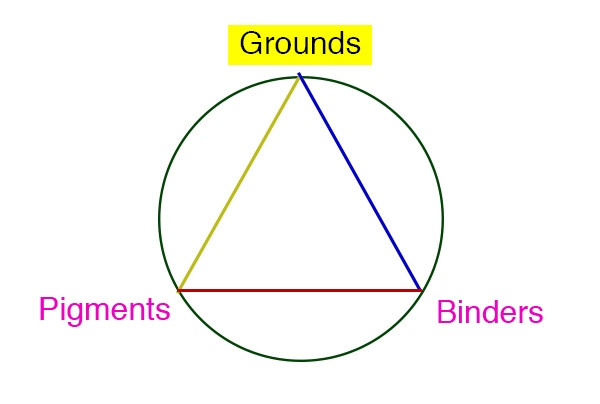
These photos where taken from a 2018 “Grounds Workshop” presented to graduate students at Boston University. They archive an ongoing series of workshops and lectures breaking down three physical elements of paint: grounds, pigments and binders. Allowing access to an array of painting techniques through developing individual practices; they illuminate conversations around material as they relate to culture, economy and intention. By sharing this information, my hope is to promote such dialog amongst artists and all those thinking about art.
They are most reliably created in a 1:1 ration of:
Binders include but are not limited to:
- K9 (High-binding acrylic)
- Plextol D498 (heavy body acrylic)
-Cellulose (plant-based fiber)
-PVA (polyvinyl alcohol)
Pigments may include:
- Titanium white (bright white)
- Kremer white (creamy white)
Popular chalks and fillers:
- Marble dust (bright white)
- Champagne chalk (beige)
- Bologna chalk (beige, transparent)
- Blanc fixe (added or opacity)
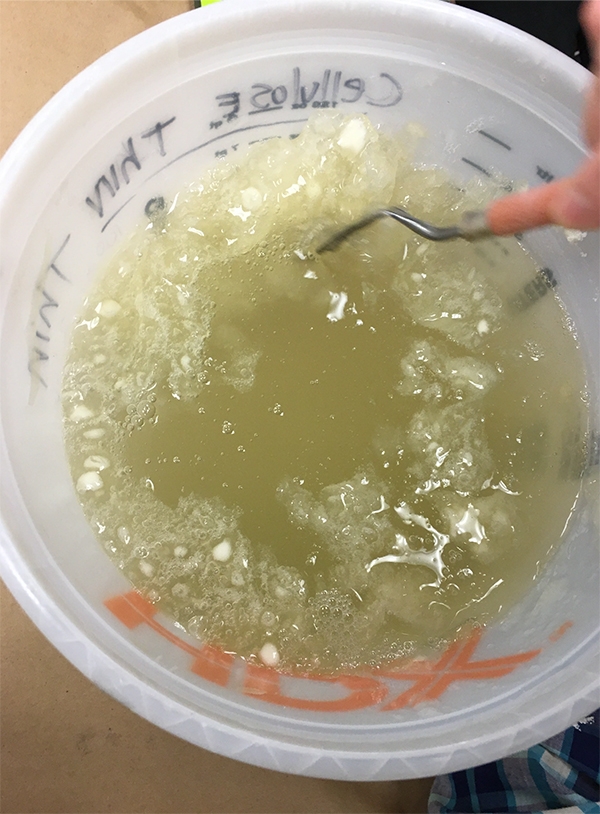
Dissolving cellulose. 100grams Cellulose: 3 liters distilled water.
- Let cellulose sit 8-12 hours. With hands or the back of a large spoon, break down remaining clumps of cellulose in water until fully dissolved.
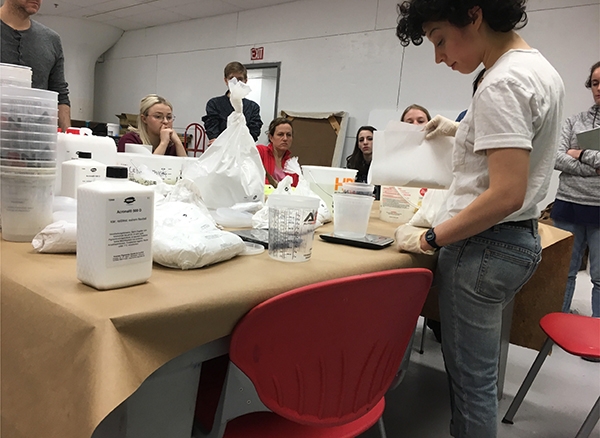
Weighing ingredients
- Weigh each ingredient dry and write down measurements as you go.
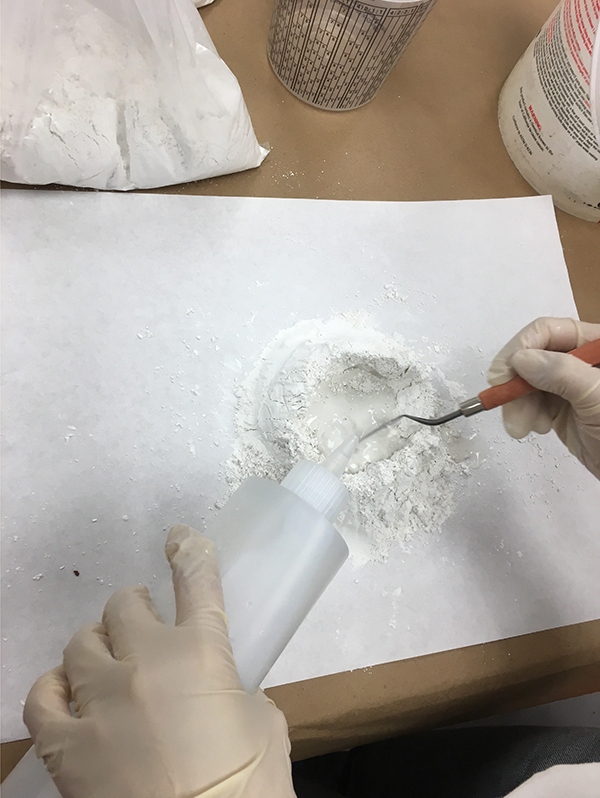
Mixing pastes from dry ingredients and water.
- Make pastes by shaping dry material into a volcano shape, slowly mixing water into center crevice.
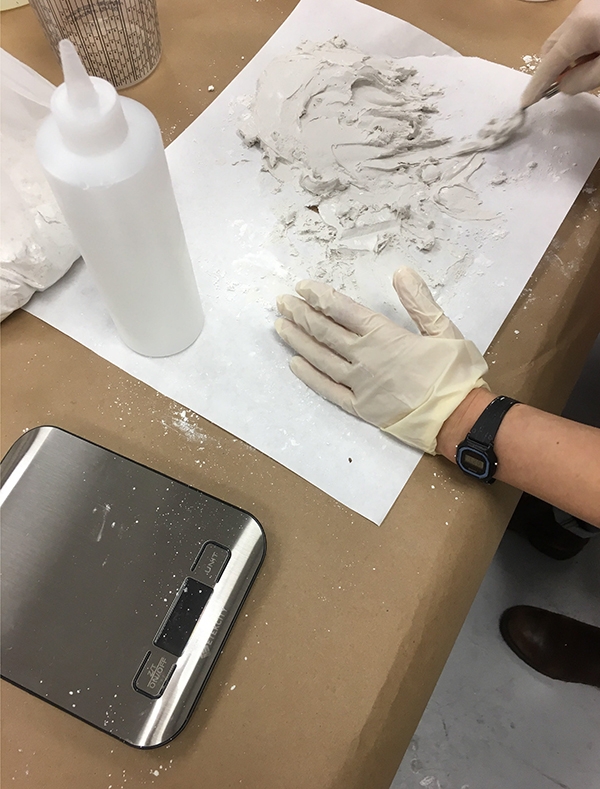
Making separate pastes for each dry ingredient.
-Mix ingredients separately as each particle absorbs water in different volumes.
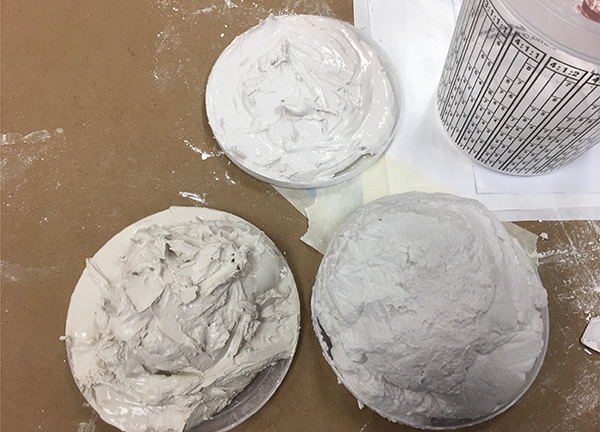
Different sets of pastes
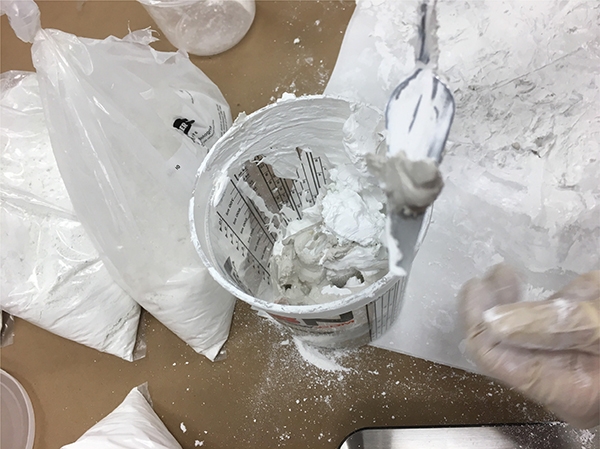
Combining pastes
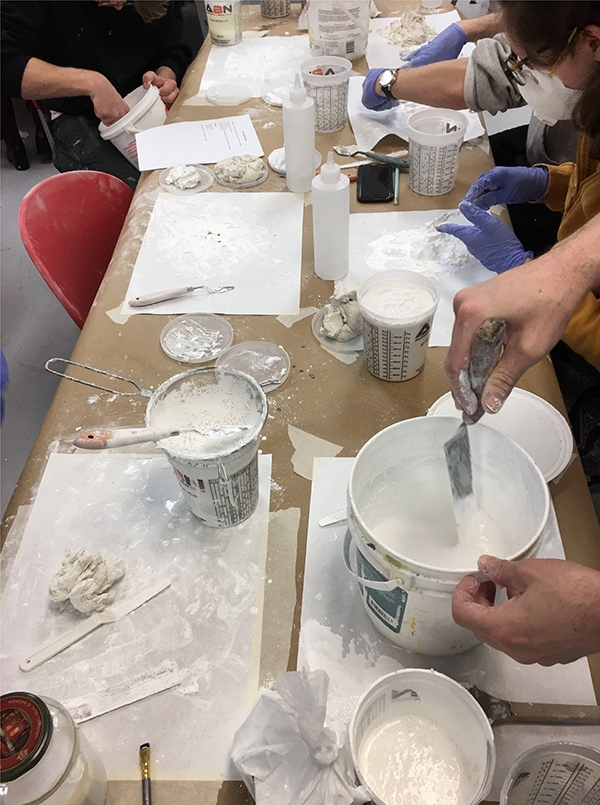
Group mixing grounds.
- Add your binder(s), stir thoroughly and pass through sieve until no clumps appear
"A ground is always a negotiation. Just because you make it yourself doesn’t mean you can make it do whatever you want.""
-differences of "to hold" versus to "behold"
"There’s always an element of chance."
"Embrace the characteristics of an ingredient’s own materiality."
-discussion of luxury items and permanence.
“I think of a ground as a trade of traits and behaviors between me and the materials.”
"A perfect ground is always going to come at a sacrifice."
“I’m ok with people knowing the temperament of my materials. I am not ok with a
major mistake.”
*Grounds Workshop, Boston University, 2/12/18-2/13/18, Boston, MA.